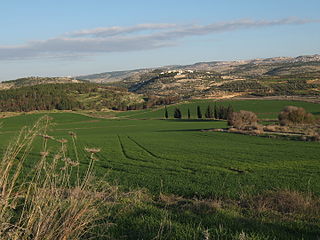For another Jewish Amora sage also of the Land of Israel, same 3d Amoraic generation and with a similar name, see Hanina ben Pappa.
For the Babylonian Amora sages of the 5th generation, see Rav Papi or Rav Papa.
Amoraim refers to the Jewish scholars of the period from about 200 to 500 CE, who "said" or "told over" the teachings of the Oral Torah. They were concentrated in Babylonia and the Land of Israel. Their legal discussions and debates were eventually codified in the Gemara. The Amoraim followed the Tannaim in the sequence of ancient Jewish scholars. The Tannaim were direct transmitters of uncodified oral tradition; the Amoraim expounded upon and clarified the oral law after its initial codification.

The Land of Israel is the traditional Jewish name for an area of indefinite geographical extension in the Southern Levant. Related biblical, religious and historical English terms include the Land of Canaan, the Promised Land, the Holy Land, and Palestine. The definitions of the limits of this territory vary between passages in the Hebrew Bible, with specific mentions in Genesis 15, Exodus 23, Numbers 34 and Ezekiel 47. Nine times elsewhere in the Bible, the settled land is referred as "from Dan to Beersheba", and three times it is referred as "from the entrance of Hamath unto the brook of Egypt”.
For another Jewish Amora sage also of the Land of Israel, same 3d Amoraic generation and with a similar name, see Hanina b. Papi.
For the Babylonian Amora sages of the 5th generation, see Rav Papi or Rav Papa.
| Rabbinical eras |
|---|
Hanina bar Papi, or Hanina bar Pappai, (Hebrew חנינא בר פפי) was a third generation Jewish Amora sage of the Land of Israel. He was among the young students of R. Yochanan bar Nafcha. [1]
He was considered an example of a righteous man who is not suspected of any sin. Once when Rav was walking with his pupil Judah ben Ezekiel, he told his student: Let's move away from that woman walking in front of us, so we will not be punished in hell. Then his pupil protested: But you yourself said that in the case of respectable people it is well? and his Rabbi replied: And who says that the intention is to us, that is to mean to a person such as Hanina Bar Papi. [2]
Abba Arikha (175–247), commonly known as Rav, was a Jewish amora of the 3rd century. He was born and lived in Kafri, Sassanid Babylonia. He established at Sura the systematic study of the rabbinic traditions, which, using the Mishnah as text, led to the compilation of the Talmud. With him began the long period of ascendancy of the great academies of Babylonia, around the year 220. In the Talmud, he is frequently associated with Samuel of Nehardea, with whom he debated on many major issues.
The righteous deed he became known for was when a certain royal minister urged him into illicit relations with her, and since she was able to kill, him, he pronounced a certain magical formula, whereupon his body was covered with boils and scabs, but the woman removed it by magic and he fled and hid himself in a bath-house with demons, knowing that the minister would not chase after him to such a place, since it was a place which whomever entered it was would suffer harm, even if two entered together, and even during daytime. After this his colleagues asked him: Who guarded you? and he replied: Two angels guarded me all night. [3]
His colleagues were R. Abbahu, R. Isaac Nappaha, [4] Rabbi Ammi, [5] and Rav Zeira. [6] Among his pupils were R. Elai [7] and R. Adda b. Abimi. [8] It is possible that he is the same person as Hanina ben Pappa who is frequently mentioned in Talmudic stories. [9]
Abbahu was a Jewish Talmudist, known as an amora, who lived in the Land of Israel, of the 3rd amoraic generation, sometimes cited as R. Abbahu of Caesarea (Ḳisrin).
Rabbi Ammi, Aimi, Immi is the name of several Jewish Talmudists, known as amoraim, who lived in the Land of Israel and Babylonia. In the Babylonian Talmud the first form only is used; in the Jerusalem Talmud all three forms appear, Immi predominating, and sometimes R. Ammi is contracted into "Rabmi" or "Rabbammi".
